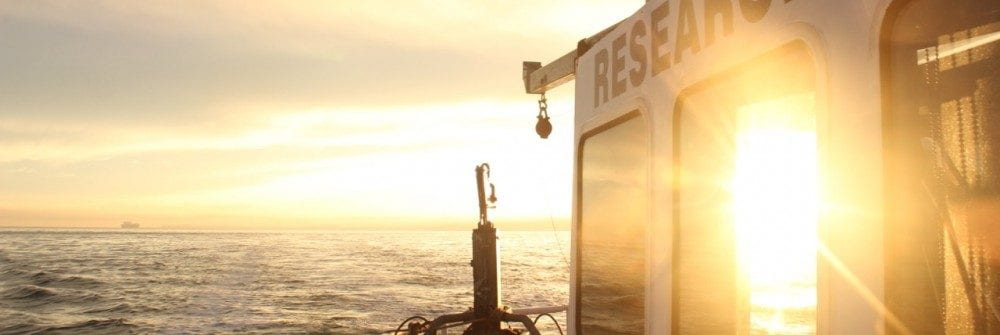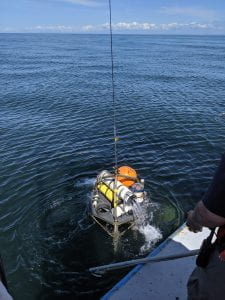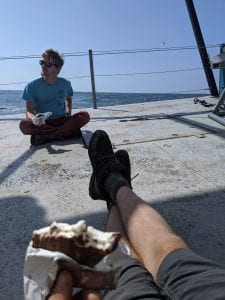This May, the UW Sediment Dynamics Lab deployed a benthic tripod in the head of Astoria Canyon to measure canyon hydrodynamics and sediment flux. Over the summer, our tripod recorded minute-by-minute data, documenting the forces that move sediment through Astoria Canyon and into the deep water sediment record. This fall, it was time to recover our tripod from the seafloor. Andrea and Evan boarded the RV Rachel Carson, steamed out to the deployment site, and sent our tripod a signal to release its recovery float… After sleepless nights worrying about bottom-trawl fishing nets hauling away our tripod, we were relieved to discover it was intact and upright, just where we left it. Recovery went smoothly in low seas, and within the hour, our tripod was on deck. We spent a few hours cleaning sandy mud off its feet, scrubbing “biology” off of its sensors, and downloaded data from its instruments.
Although the tripod was safely on deck, our jobs were far from over–we had also set out to collect seismic profiles and sediment cores from the canyon! The USGS accompanied us aboard the RV Carson, and in collaboration with this project, they created a survey plan to map the geologic structure of Astoria canyon with seismic gear (CHIRP and multichannel). Together, the crew logged ten days of 24-hour seismic data collection, and through all that surveying, we managed to have some fun. We caught salmon and tuna, saw dozens of humpback and pilot whales, and had heated discussions over the best practices in coffee brewing. After returning to port, the USGS crew returned to Santa Cruz, reinforcements from UW’s Sed Lab arrived, and we boarded the vessel yet again for two final days of coring. Over this two day effort, the sediment lab collected 25 box cores in and around the canyon head and shelf rim, coring efficiently in spite of large swell and mechanical difficulties.

USGS scientists deploy the CHIRP seismic package behind the boat, where it will be towed for the next week. This unit contains both the seismic source and receiver.
All told, three datasets were successfully collected from Astoria Canyon, and this is a big step forward in understanding what phenomena drive sediment from the continental shelf to the deep ocean. We’re excited to begin sharing results!




